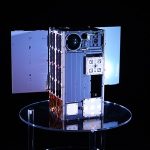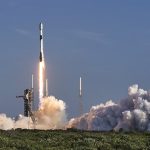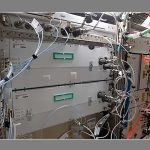SpaceX's 32nd resupply mission for NASA includes ISS National Lab-sponsored biomedical research, physical sciences projects, technology demonstrations and NSF-funded science.

A project focused on manufacturing nanomaterials with potential treatments for osteoarthritis and cancer is among several high-impact investigations set to launch aboard SpaceXs 32nd Commercial Resupply Services (CRS) mission to the International Space Station (ISS). Sponsored by the ISS National Laboratory and funded by the US National Science Foundation (NSF), these experiments are designed to both benefit life on Earth and support the growing economy in low Earth orbit (LEO).
The mission is scheduled for launch no earlier than April 21, 2025, at 4:15 a.m. EDT from Launch Complex 39A at NASAs Kennedy Space Centre in Florida.
Among the key investigations, researchers from the University of Connecticut and Eascra Biotech, supported by Axiom Space, will continue their development of Janus base nanomaterials (JBNs). These synthetic molecules, which self-assemble into structures similar to human DNA, hold promise as injectable therapies for regenerating cartilage in osteoarthritis patients and as vehicles to deliver cancer drugs into solid tumours. Their work, previously featured in Upward, the official magazine of the ISS National Lab, leverages the microgravity environment to enhance nanomaterial production for medical use on Earth.
The mission will also carry three NSF-funded experiments that aim to expand fundamental scientific knowledge with real-world applications. At Rensselaer Polytechnic Institute, in collaboration with Tec-Masters, scientists will explore how protein solutions behave in microgravity to better understand and potentially prevent the clumping of proteinsa significant hurdle in the production of protein-based pharmaceuticals.
Meanwhile, a team from the University of Alabama at Birmingham, supported by Leidos, will investigate the formation of ceramic-nanomaterial composites in space. These materials, known for their strength, conductivity, and heat resistance, could be used in energy storage, electronics and advanced nanodevices due to their adaptability in shape and size.
Researchers at the University of California, Santa Barbara, in partnership with Redwire Space Technologies, will examine active liquid-liquid phase separation (LLPS), a process in which immiscible liquids like oil and water separate. Insights from this phenomenon could lead to the development of soft materials with dynamic, lifelike properties capable of movement, shape-shifting, or self-repairsuitable for future advancements in robotics.
Also on board will be the Extant Life Volumetric Imaging System (ELVIS), developed by Portland State University with NASAs Jet Propulsion Laboratory and Teledyne Brown Engineering. This advanced microscope uses holographic imaging to capture detailed 3D views of cellular activity, which could deepen our understanding of how life adapts in extreme conditions and contribute to the search for extraterrestrial life.
Lastly, Sophie’s BioNutrients, supported by BioServe Space Technologies, will explore the viability of producing plant-based protein alternatives using microalgae in space. By studying how microgravity affects protein yield, metabolism, and growth, the research could pave the way for sustainable food sources and bio-based fuel production during long-duration space missions.
Collectively, these cutting-edge investigations underscore the ISS National Labs mission to foster innovation that transcends Earthly boundaries, enabling scientific progress that could transform industries both on and off the planet.
















































































